#Queen anne's lace | Daucus carota
Text
...
#Queen anne's lace | Daucus carota#Pulled from a roadside wildflower tangle on a whim. Date sometime before 24 August 2022.#While riding bikes to visit makeshift museum of twisted metal.#I rode slow alongside my mom. probably. it's a blurry memory.#On a tiny island on a sea sized lake#shallow and full to the brim with fossils and dead fish and broken glass.#An island that gave my mother her name. one of my favorite places. where i imagine storms when im angry#My first memory of this plant is old.#My mom pushing my sisters in a red double stroller in the summertime.#Turning the bend near our home.#Or walking toward my grandparents house in late August. maybe. i dont remember#Just that she told me it was queen Anne's lace and I patted my face with it like a powder puff.#Its tiny white flowers branching out blurry like a globular cluster pressed flat. Like stars huddled around the mass of a tiny velvet purpl#flower. a flower that makes me feel small and needy. with tiny hands and tiny worries.#...usually i write these things off thr top of my head but this one was prewritten. i just feel too insecure to make writing posts that can#be reblogged 😬 but anyway im writing entries for the handful of pressed flowers thst i have. idk y i grabbed this one bc it was the 1st#i just always liked queen anne's lace. childhood nostalgia and all that i suppose#unrelated#also i say it was prewritten but when i wrote it. it was still just brain vomit without editing lil
3 notes
·
View notes
Text
good omen spotted: saw a little blue wasp on the floor, scooped it up in my bug catchin' jar, turned out to be a black widow eater! the omen foretells that i will get to see more wasps :]
#lune croaks#ive been seeing so many of them lately! i was wondering why#they feed on the nectar of daucus carota--queen anne's lace--which has just bloomed out!#love love love a dirt dauber. they're so fucked up <3
21 notes
·
View notes
Text
“Prickly”

View On WordPress
#bishop&039;s lace#black and white#Daucus carota#monochromatic#overcast#plants#Queen Anne&039;s lace#wild carrot
0 notes
Text
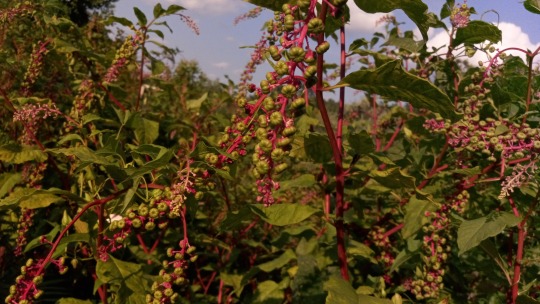


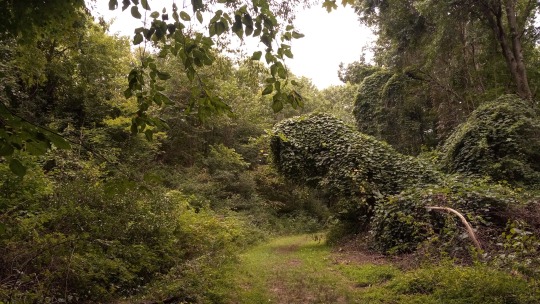
2023
#photography#photo#pokeberry#milkweed#queen anne's lace#phytolacca americana#asclepias syriaca#daucus carota#original#personal#own#nature#fields#meadow#forest
0 notes
Text

queen anne's lace
#queen anne's lace#daucus carota#white#wildflowers#blooming#breezy#meadow#July#Summer#Hearth Hill#animated GIF#triple
0 notes
Photo
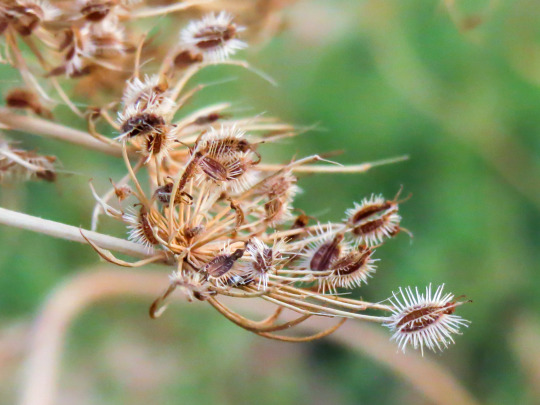
Scientific Name: Daucus carota
Common Name(s): Wild carrot, Queen Anne’s lace
Family: Apiaceae (carrot; umbellifers)
Life Cycle: Biennial
Leaf Retention: Basal rosette
Habit: Forb
USDA L48 Native Status: Introduced
Location: Plano, Texas
Season(s): Summer
Fruits (seeds). See the flowers here.
#Daucus carota#wild carrot#Queen Anne's lace#Apiaceae#biennial#forb#introduced#Plano#Texas#summer#fruit#brown#edible plants#carrot#umbellifer#Umbelliferae#plantblr
0 notes
Text
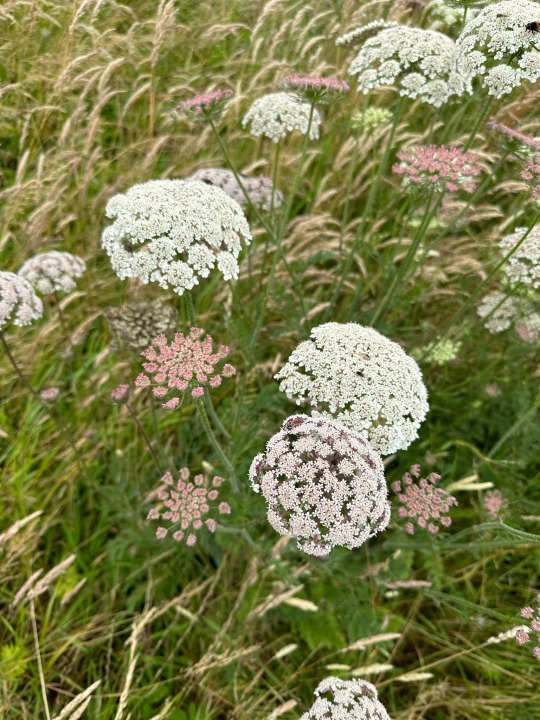
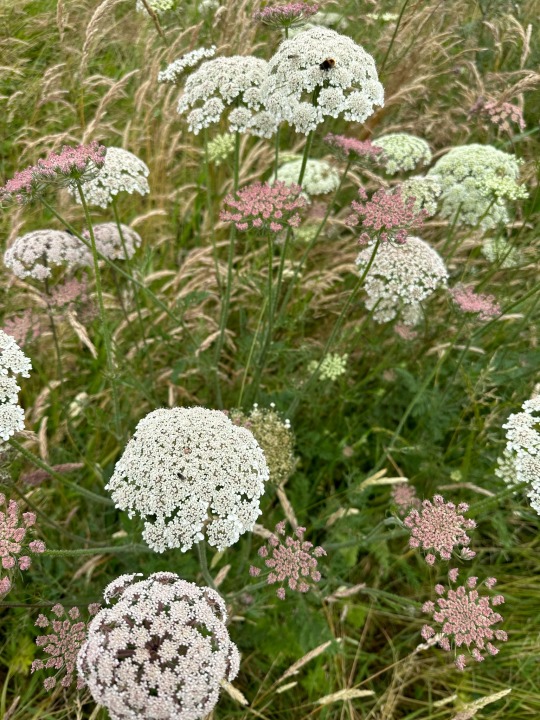

Plant of the Day
Wednesday 23 August 2023
The umbrella-like clusters of Daucus carota (wild carrot, Queen Anne’s lace) flowers are usually white and often have one purple or red flower in the centre. There are pink and purple forms grown in gardens. These clusters of flowers fold inwards, becoming concave, when they turn to seed.
Jill Raggett
#Daucus#wildcarrot#QueenAnne’slace#wildflowers#wildflower#plants#meadow#horticulture#gardens#garden#orkney#annual
287 notes
·
View notes
Text
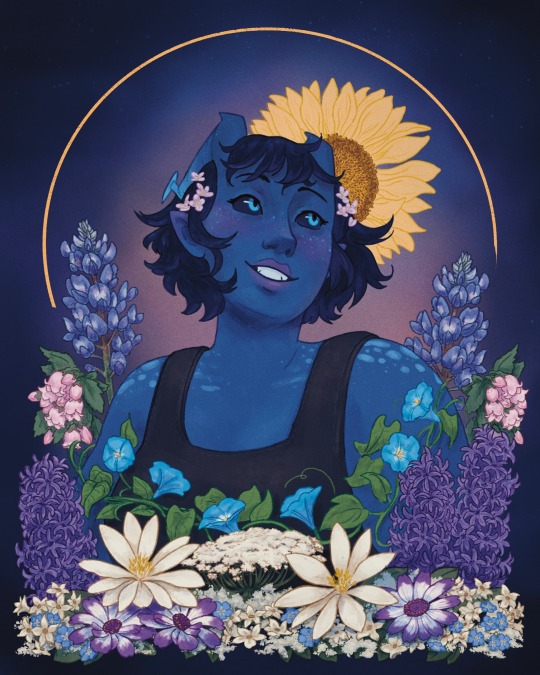
Phaela
Fourth in my portrait series is my own girl, Phaela Murphy, tiefling soup twilight cleric and circle of stars druid. DM is @bacoj8.
Flowers
Huckleberry (Vaccinium parvifolium) : simple leisure, faith. Phaela's patron god, Thelona, is the god of simple pleasures.
Cineraria: always delighted
Queen Anne’s lace/Wild carrot (Daucus carota): sanctuary, home
Celery (Apium graveolens): Feasting, festivity
Stephanotis: desire to travel, friendship. Phaela and her best friend Izen live together in her truck, traveling from town to town in search of work and sights to see.
Bloodroot/Sweet slumber (Sanguinaria canadensis): protective love
Purple hyacinth (Hyacinthus): Benevolence, rashness, impulsivity, play, grief, please forgive me. Phaela's virtue name is Temerity, which suits her well-meaning but somewhat impulsive need to help others. She is playful and kind, but carries a deep grief as well.
Bluebonnet (Lupinus subcarnosus): self sacrifice, survival
Meadow cress (Cardamine pratensis): ardor, devotion, enthusiasm. According to folk belief, this flower brings bad luck if brought into the home. It is not included in May Day wreaths and garlands because some believed that wearing it would offend the fae, who would drag you underground into another world. Phaela was separated from her home forever when, in order to ditch a deal with a hag, she trapped herself in the Shadowfell.
Night Convolvulus (Convolvulus): night, repose, rebirth, affection, embrace
Sunflower (Helianthus): warmth, nourishment, devotion. This flower is redundant, I just wanted it as a treat. Yellow :)
Forget me not (Myosotis): Clinging to the past, do not forget me, faithful love, memories. Ough.
Check out the rest of the Pringles Party!
Theseus | Izen | Yancy | “Red”
#dnd character#dnd character art#dnd character portrait#dnd pc#dungeons and dragons#language of flowers#floriography#tiefling#circle of stars druid#dnd druid#twilight cleric#dnd cleric#my art#planar pringles#art: phaela
124 notes
·
View notes
Text

Who Wants To Be A Princess When You Can Be A Queen?
Watercolor on Black Paper
2022, 11"x 14"
Queen Anne’s Lace, Daucus carota
#artists on tumblr#flowers#floral#art#watercolor#painting#nature#minimalism#white#white flowers#queen anne's lace#daucus#artwork#minimal#garden#wildflowers#plants#floral aesthetic#naturecore
150 notes
·
View notes
Text
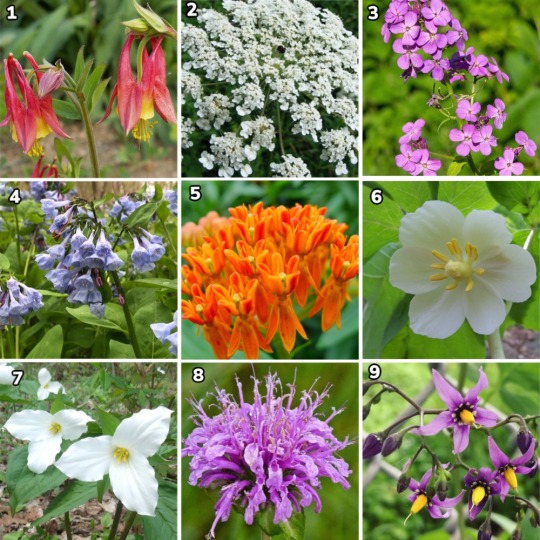
71 notes
·
View notes
Photo


Daucus carota (Queen Anne's lace)
Even if the beautiful Queen Anne's lace is considered a ‘weed’ in North America, long after the petals have fallen, its seedheads still have their own kind of charm. These photos were taken this afternoon at my local “Invasive Plant Demonstration Garden” down by the train tracks.
#flowers#photographers on tumblr#Queen Anne's lace#wild carrot#brown#fleurs#flores#fiori#blumen#bloemen#Vancouver
74 notes
·
View notes
Text

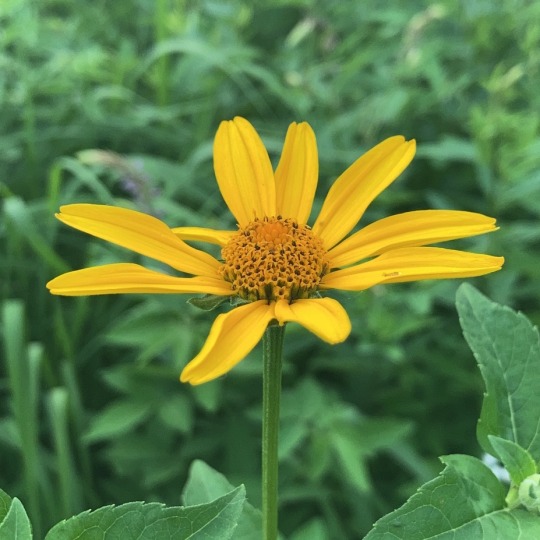


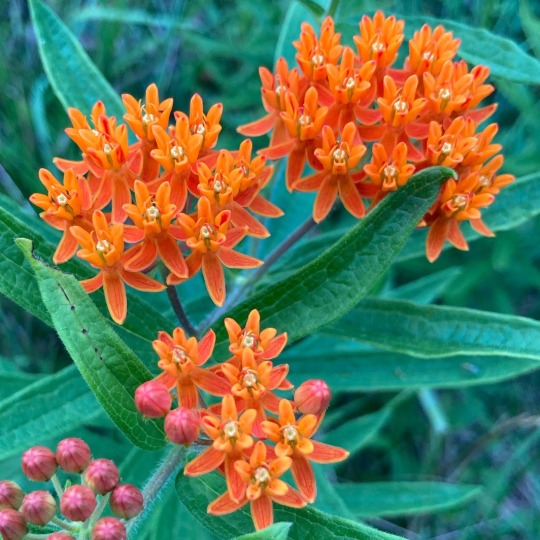
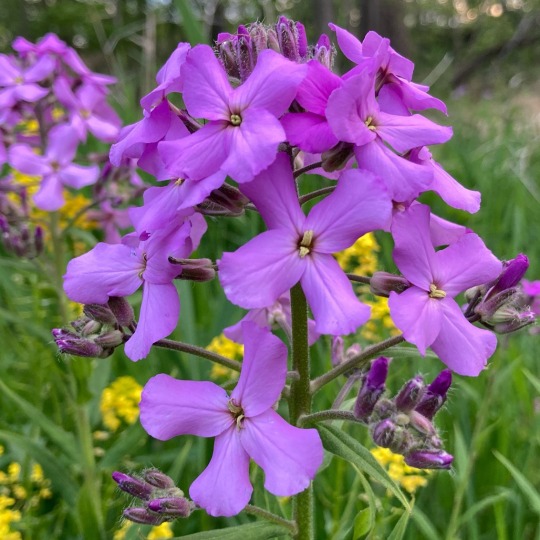


1. Chicory (Cichorium intybus), 2. False Sunflower (Heliopsis helianthoides) 3. Alsike Clover (Trifolium hybridum), 4. Virginia Springbeauty (Claytonia virginica), 5. Butterfly Milkweed (Asclepias tuberosa), 6. Dame’s Rocket (Hesperis matronalis), 7. Queen Anne’s Lace (Daucus carota), 8. Common Star-of-Bethlehem (Ornithogalum umbellatum)
11 notes
·
View notes
Photo

Is Queen Anne’s lace (Daucus carota) a weed? Not to me. I grow it because it’s one of my favorite flowers. Attracts pollinators, too.
78 notes
·
View notes
Text
#1930 - Daucus carota - Wild Carrot

Photo by @purrdence while she was in Aoteoroa, where the wild carrot has been naturalised since at least 1854.
AKA bird's nest, bishop's lace, Bee's Nest-Plant, Devil's Plague and in North America, Queen Anne's Lace.
The direct ancestor of the cultivated carrot, which is regarded as a subspecies. The Binomial comes from the Greek for carrot, and the Latin via other Greek for carrot. The English name comes from the French ‘carotte’, which, surprise surprise, means carrot. It’s possible they all trace back to the Proto-Indo-European ‘ker’ for horn, referring to the large taproot. Daucus carota subsp. sativus translates as “the cultivated carrot carrot”.
The arms of the umbel curl up into a cage after the flowers are pollinated, and the seeds cling to fur and clothing. Curiously, there’s often a single dark pink flower at the center of the disk of white ones. It’s possible this attracts small pollinators (like the Zorion longicorn here) by pretending to be one.
The wild plant can cause contact dermatitis, and some of its very similar-looking relatives like Hemlock are deadly. The domesticated varieties were originally white-rooted and used as a medicinal plant, an aphrodisiac and to prevent poisoning. On the other hand they may have been using parsnips, since they weren’t entirely distinguished in ancient times. A purple-rooted variety existed perhaps as early as the 700s in Afghanistan and was introduced in Europe by Arabs circa 1100. It was cultivated into the modern orange root in the 17th and 18th centuries in the Netherlands. There are frequent claims that the selective breeding was in honour of William of Orange, but by that time there were already orange carrots, which simply did better in the climate of the Netherlands.
Another myth revolves around carrots and eyesight - they’re certainly a good source of Vitamin A or retinol, via carotene pigments (guess where the name comes from) and hence rhodopsin, the retinal pigment, but it was propaganda during the Second World War that claimed it was carrots that gave English pilots such good night vision. They were really concealing the invention of Airborne Interception Radar. It’s not clear whether the Germans actually fell for it, but they did start feeding their own pilots more carrots, and the British also promoted carrots as useful during blackouts in the Blitz.
19 notes
·
View notes
Text

A touch of gore
A sure sign that summer is wearing on: Queen Anne's lace blossoms, with their mysterious little splash of gore.
Officially the plant is "daucus carota carota". In the second year of its life cycle, it produces flowers with a little reddish purple "floret" in the middle.
That tiny splash of color is what gives the flower its name. Legend has it that Great Britain's Queen Anne pricked her finger while tatting lace and left a drop of blood on the fabric.
Botanically, the speck of color is something of a mystery. Some biologists think it's meant to draw pollinators to the flowers.
My theory is it's there just for fun.
8 notes
·
View notes
Text
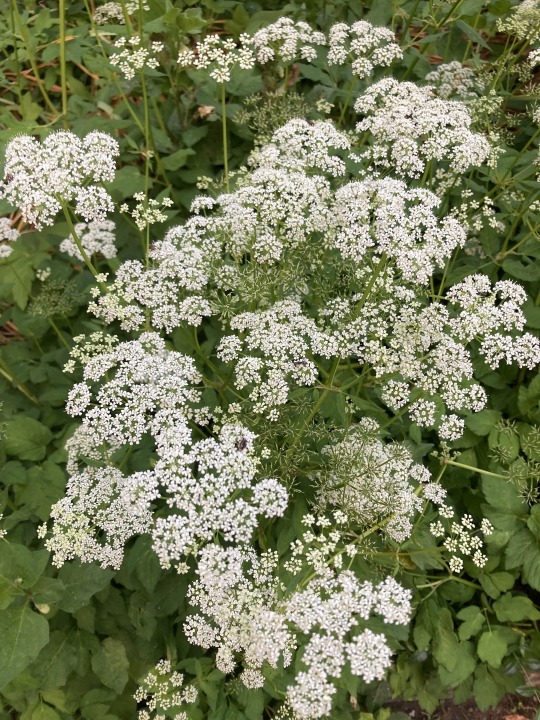
Queen Anne's lace (Daucus carota). Symbolizes safety, sanctuary, and refuge
12 notes
·
View notes